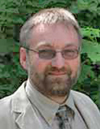The Tenth IASTED International Conference on
Parallel and Distributed Computing and Networks
PDCN 2011
February 15 – 17, 2011
Innsbruck, Austria
KEYNOTE SPEAKER
From TERA- to PETA- to EXA-Scale Computing: What does that mean for our Community?
Abstract
Parallelism and Scalability have become the major issue in all areas of Computing, nowadays pretty much everybody – even beyond the classical HPC field - is using parallel codes. Nevertheless, the number of cores on one chip – homogeneous as well as heterogeneous – is significantly increasing in future. Soon we will have millions of them in one HPC system, the ratios between flops and memory size as well as bandwidth for memory, communication and I/O will get worse, the need for energy might be extraordinary, and it is not clear what will be the best programming paradigm.
The talk will describe technology developments, software re-quirements, and other related issues to identify challen¬ges for the community which have to be carefully addressed – and solved – within the next couple of years.
Biography of the Keynote Speaker

Prof. Dr. Wolfgang E. Nagel holds a Chair for Computer Architecture at Dresden University of Technology (TUD). He has studied computer science at RWTH Aachen from 1979 to 1985. Then, he has worked in the area of parallel computing at the Central Institute for Applied Mathematics, Research Center Jülich, and at the Center for Advanced Computing Research (CACR), Caltech. In 1997, he became the founding director of the Center for HPC (ZHR) at Dresden University of Technology (now called ZIH). From 2006 to 2009, he acted as the dean of the Computer Science department at TUD. His is a member of the DFG commission for IT-Infrastructure (KfR), chairman of the Gauß-Allianz, and a member of the International Exascale Software Project (IESP). His research profile covers modern programming concepts and software tools to support complex compute intensive applications, analysis of innovative computer architectures, and the development of efficient algorithms and methods. He has published about 110 papers in those areas, and served as a program committee member, program chair, or general chair for more than 45 conferences and workshops.















